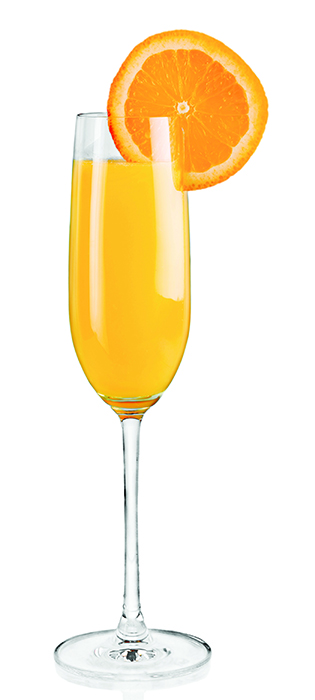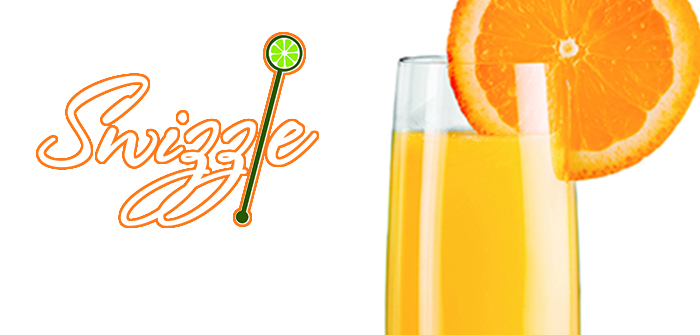story by Liesel Schmidt

Seeing the sunny yellow hue of the mimosa cocktail, there’s little wonder that this bright, refreshing drink bears the name of a flower of the same name—not to mention the same color. In the same way the flowers themselves seem to light up the branches of the trees from which they burst forth, the drink seems to light up the palate, bursting with the brightness of bubbles that add effervescent appeal to the sweet acidity and tartness of citrus juices.
So just where did this ingenious drink originate? Credit the creative drinkers and thinkers of Spain, where oranges and sparkling wines like cava are produced in abundance. After all, when life gives you oranges…add fizzy alcohol? Can’t argue with that!
Traditionally speaking, mimosas are most often created using one part champagne or sparkling wine to one part orange juice, though it can be made with the juices of another citrus fruit, like grapefruit. But—especially here in Florida, where we tend to have a thing for oranges—we’re all about the classic, mixing up OJ with our fave champs or sparkling wines to create the perfect way to start the day (did someone say “brunch?”), celebrate the blessed union of two souls, or indulge during our time in first-class (or, for those of us in coach, pretending we’re in first class…).
But who says you can’t have a mimosa any time? With so much vitamin C, the case can be made for the mimosa as a healthy drink, don’t you think? And who doesn’t love being healthy? It’s also an extremely simple recipe, as it literally takes only two ingredients to make. One part to one part, though some recipes call for the ratio to skew more on the side of adding more alcohol, depending on the desired level of sweetness—not that we have a problem with that. It’s all about your personal preference. What makes it seem so special is, of course, the celebratory feel of the champagne or sparkling wine and the champagne flute that the drink is traditionally served in.
One of the great things about this fizzy drink is the fact that—aside from being almost idiot-proof—it can be made relatively inexpensively, and no one will be the wiser. Because you’re mixing your ingredients, it doesn’t require the use of premium quality champagne or sparkling wine, which means you can save your pennies and still come out looking like quite the cocktail genius. There is, however, something to be said for not going too cheap, as those bargain-basement bubblies will bring you nothing but headaches later on (literally).
It’s important to start with cold ingredients and keep them chilled until you’re ready to make the drink. And that champagne flute isn’t just because we want to be all fancy—it actually serves a purpose, as the tall design of the glass helps retain bubbles. If you don’t have a flute, use a wine glass. Not quite as effective, but still good.
Method is important here, as well. Unless you like having overflow, pour the sparkling wine into the glass first, then follow it with the juice. It’s also key to make like a beermeister and hold the glass at a slight tilt as you pour the wine, which will preserve those bright little bubbles we all love so much.
Whether you’re a bruncher or an equal-opportunity sipper, mimosas have a way of brightening and lightening any occasion. So raise a glass to OJ (and champagne) all day!

Classic Mimosa
INGREDIENTS:
2 oz. Pulp-free orange juice
6 oz. Chilled champagne or dry sparkling wine
DIRECTIONS:
Pour chilled sparkling wine or champagne in a champagne flute, then top off with orange juice. Garnish with orange slice or peel, if desired.

